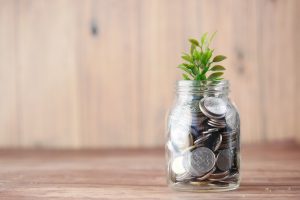Where to for sustainability in an economic downturn?
-Dr. Barbara Nebel, CEO, thinkstep-anz
Is sustainability a ‘fair weather friend’ in your manufacturing business? Do you see it as something to cut back when recession calls? If so, you’re missing a business opportunity. Building a more environmentally and socially sustainable business can make your business more efficient and resilient and help you weather the storms ahead.
The New Zealand government is forecasting a recession in 2023. This is difficult news for manufacturers already challenged by creaky supply chains and a tight market for skills. Make the most of the many opportunities sustainability offers.
Business benefit: reduce your costs
Understand your environmental impacts – and reduce them
Everything that goes into making your product has an environmental footprint – and a dollar cost. Start by understanding your footprint. A Product Carbon Footprint study measures the carbon your products generate. A Life Cycle Assessment (LCA) considers other impacts too, including the water you use and the waste you generate.
Food manufacturer Comvita’s LCA NZ Manufacturer October 2022 by Media Hawkes Bay Limited – Issuu will help the business understand the environmental impacts of its ‘honey in a pot’, from growing the mānuka forests the bees feed on to disposing of the honey’s empty packaging.
 Armed with information about your environmental impacts, look at whether you can cut some costs. Can you reduce the amount of energy you use? Use raw materials more efficiently? Cut the waste you generate and the costs of disposing of it?
Armed with information about your environmental impacts, look at whether you can cut some costs. Can you reduce the amount of energy you use? Use raw materials more efficiently? Cut the waste you generate and the costs of disposing of it?
The beauty of LCA is that it shows trade-offs. It will help you understand how tweaking one aspect of your product (e.g. the energy you use) affects other aspects (e.g the waste you generate).
Buy responsibly
Purchasing goods and services produced in environmentally and socially responsible ways can save you money. For example, buying from local suppliers can reduce your transport costs. Purchasing materials with minimal packaging may cut your costs of disposing of waste.
Adapt your packaging
Look at options to reduce the size of your packaging, and reuse or recycle packaging materials. You may be able to cut back the materials you use, and the costs involved in transporting your product to your customers.
Business benefit: reduce your risks
Today’s risks are tomorrow’s costs. So manage those risks. For example, ask your suppliers to review their supply chains. Make sure you – and they – are not inadvertently breaching human rights by supporting modern slavery.
Investigate your climate risks. How are extreme weather events and gradual changes in climate likely to affect your manufacturing business? What can you do now to reduce the long-term costs involved?
Business benefit: recruit, engage and retain your team
Many employees want to work for a business that ‘does the right thing’ for people and the planet. A 2021 study by global Human Resources analytics firm Gallup reported that almost 70% of employees say that a company’s environmental record influences their decision to sign on. The study’s authors confirm that sustainability activities can help businesses engage and retain employees too.
What does this mean on the factory floor? In a tight labour market, reducing carbon emissions, sourcing raw materials ethically, and avoiding ‘modern slavery’ in your supply chain could help build a loyal, productive team. Functional textile manufacturer Nanolayr NZ Manufacturer September 2022 by Media Hawkes Bay Limited – Issuu recognises that its workforce values its active sustainability programme.
Business benefit: harness the opportunities
Let’s take ‘green building’ as an example. If you manufacture building products, the construction sector’s growing interest in green building and ‘embodied carbon’ is a business opportunity. (Embodied carbon is the carbon involved in sourcing and transporting raw materials to make building products, manufacturing those products, constructing and maintaining the building, demolishing it at the end of its life, and transporting and disposing of the waste.)
Take advantage of this interest by understanding your products’ embodied carbon. A Product Carbon Footprint study or Life Cycle Assessment will help you. Then tell your environmental story with an Environmental Product Declaration (EDP) or carbon certification. Manufacturer Envirocon has registered an EPD for its pre-cast concrete blocks. The company makes these blocks from quality concrete that would otherwise go to waste.
You may find this tool helpful. It’s our thinkstep-anz embodied carbon calculator, jointly funded with the New Zealand Green Building Council.
The key? Focus!
Kick off 2023 with a simple sustainability strategy (or update your existing strategy). A plan will help you and your team understand where to focus to weather the rough patch ahead.
Start with a materiality assessment. This tool will help you understand and prioritise the sustainability topics that matter most to your customers, suppliers, team and community. Then add in the ‘business lens’. Which of these topics matter most to your business?
Zooming out to the global picture can be useful too. As NanoLayr found, it can help you engage your team in your sustainability work. The United Nations’ 17 Sustainable Development Goals are a good place to start. Which ones are most relevant to your business?
We wish manufacturers well in 2023. There’s never been a better time to become more sustainable – for the planet and its people, and for your business too.



